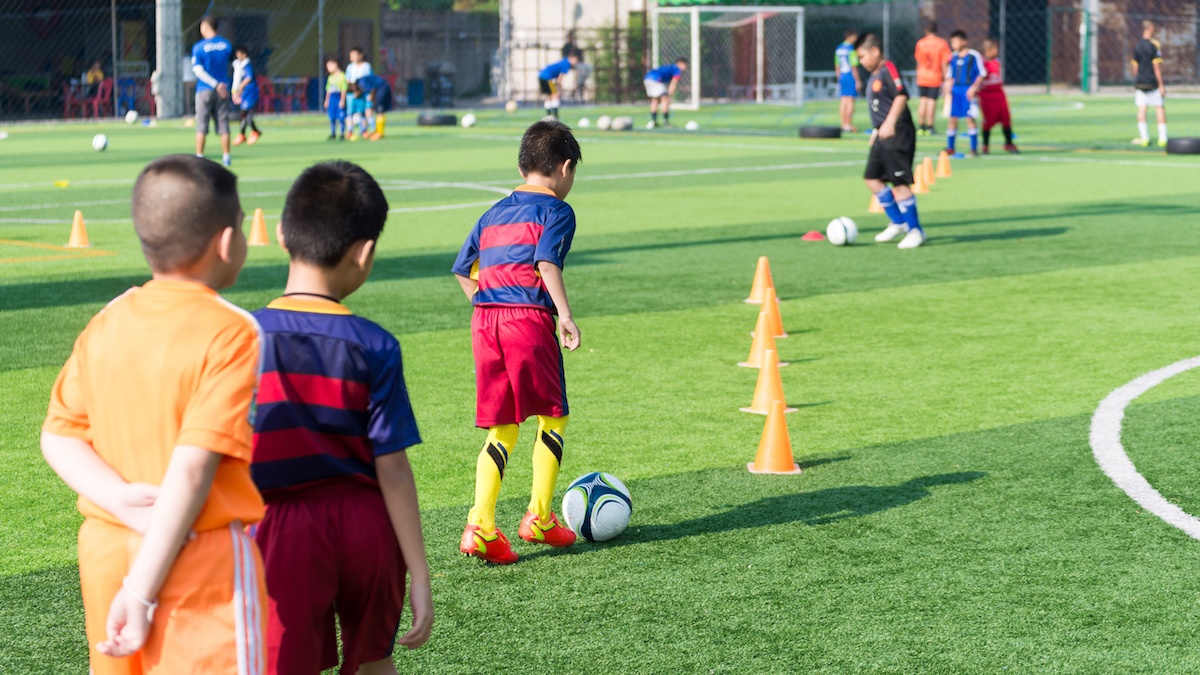Improving the Youth Football Development Process
Have you stopped to think what typical weekly schedule includes for a young footballer? When you do you might start to reconsider some traditional thinking like:
- ‘Practice makes perfect’
- ‘10,000 hours are what it takes’
- ‘Teams overseas train ‘x’ times per week at ‘x’ age’
This is roughly a typical week for a junior footballer:
Football club coaching, football private coaching, football school coaching, football representative coaching, school, homework, music lessons, tutor, sleep, eat, downtime. Repeat.
When you look at a schedule like that - notice there isn’t even time for socialising with friends - it becomes difficult to justify those earlier statements. Here are some questions we think need to be asked instead of repeating the same thoughts:
- Is this really ok?
- Is this the right way for players to be developing?
- Is there a better alternative?
Let’s have a look at what good comes from this mentality and process, whilst also weighing up questionable downsides.
1) Developing habits
Positives of developing habits
- Players develop routines of turning up somewhere they have committed to being. They begin to construct individual morning and evening routines to ensure they are prepared for what’s ahead the following day. They become organised and begin to understand they have responsibilities.
Negatives of developing habits
- Do young kids need to develop ‘routines’? Should we enable that to happen naturally and in particular largely for things they are doing for fun?
- Are the kids being spoon fed by parents through the schedule or do they begin to take the responsibility?
2) Appropriate consequences for young people
Positive consequences
- Being in a sporting environment where not behaving or performing at a certain level may mean that you don’t play or you are asked to leave the team.
- Educating our youth that their choices will lead to a consequence, good or bad, can be powerful and can definitely provide them with a better understanding of how to take responsibility for their actions.
Negative consequences
- Depending on the age, some consequences can be harsh and actually damage the confidence of youth players. I’ve witnessed countless players as young as 8 years old being given little to no playing time because they were deemed ‘not good enough’ or were late because their parents finished work late.
Reality checks, common sense and coach education are critical here. Who is good enough at 8 years old? Will they improve or learn anything by not playing? What is gained and what is lost by limiting the playing time of a young player? Will you be touted as the next manager of the Socceroos because you won the U8 competition undefeated?
3) Skill development
Positives of skill development
- Hopeful footballers start at a young age, many play nothing but football all year round and some train as many as six times per week. With this approach, there is a huge opportunity for an increased contact time with the ball at their feet.
- More time to practice playing football provides the opportunity to accelerate the learning process.
Negatives of skill development
- Sure, practice makes perfect, but as we know, that practice has to be purposeful. That practice has to be relevant to their biological age and stage of physical and cognitive development.
- The 10,000-hour rule from Anders Ericsson that is always being mentioned doesn’t necessarily relate to football development. If I do 10,000 hours of training without assessing my performances, refining my skills when I make a mistake, introducing progressions or always seeking to improve slightly each time will I progress the same as someone who does?
- Constantly repeating the same movements in any sport can lead to overuse injuries and minimise the opportunity to learn other important athletic movements which can carry over to football in the long run.
- Mixing-up sports at a younger age before specialising later has proven to be very effective way of increasing longevity in the game. Not to say you can’t play football year-round, but having it in different environments and with increasing/decreasing dominance in your schedule can be huge for youth long term development. Top clubs, such as Man United, regularly implement things like parkour, trampolining, gymnastics, tennis, handball and other sports throughout their youth teams to create that multi-sport athletic fundamental base.
4) Access to professional learning environments
Positives of having access to professional learning environments
- More and more people are getting involved in football. There are some great education courses out there to develop as a coach and plenty of chance to ply your trade with teams always looking for helpers.
- The quality of education and opportunity is increasing each year which means that children can have access to some brilliant educators any day of the week on a regular basis once again providing a learning platform to accelerate the development process.
Negatives of having access to professional learning environments
- The practice that players get now very often comes in the form of structured coaching. ‘Do this, don’t do that’. Children have phenomenal imaginations, they are persistent and are very efficient problem solvers when provided the opportunity to try it for themselves. The constant exposure to a coaching environment without any free play can be a dangerous path to go down.
In fact, there are some excellent players who have developed very well with very little coaching up to a certain age, they tend to learn many of their skills solely through playing with friends or on their own for fun.
It’s definitely important to learn from a good coach, and very often the debate that Barcelona youth or Bayern Munich youth train ‘x’ times per week is brought up. Which is great, but it again comes down to context. What does their day, month, year look like? Do they have control over the rest of the players schedules? I’ve seen it several times, people trying to recreate what the best in the world with only a small piece of the puzzle regarding how they implement their long-term development strategy.
5) Creating a fun environment
Positives of creating a fun environment
- Most kids love the game. Playing football is all they want to do. They are happy, they get to socialise with friends, they get to be in competitive environments (which can be a huge advantage later in life).
Negatives of creating a fun environment
- Touching back on point ‘4’, the environments children are playing in may not necessarily be ‘fun’ due to the regimented approach which free play doesn’t have.
- You just have to look at the schedule at the start of the article to realise that there isn’t always time for ‘fun’.
Should this situation change?
Will there be any changes? Do we even need any changes? Should there be more freedom, fun and exploration?
Or, should it be even more rigid, professional with more hours dedicated to structured practice with a coach?
From regular discussion with coaches it appears that many believe there is a better way. It no doubt requires additional education for coaches, teachers, parents and players to make it more effective with a blend of art, science and common sense.
What way you believe is best to develop a youth player is a matter of opinion. Just be sure to keep the physiological and psychological facts in mind.
Finally, there will be a life at some point that doesn’t include full time football in it which children must have in their mind whilst going through the development process. Provide them with the tools to prepare for their chosen career path when the footballing career is over!


